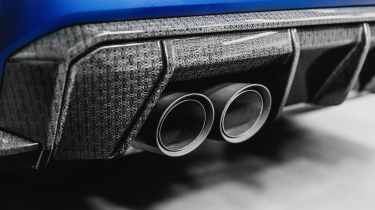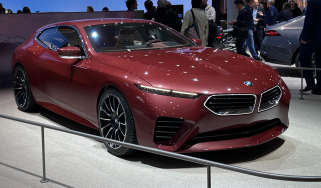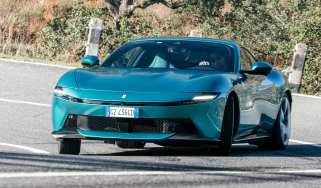The EU is considering banning carbonfibre, but BMW has other ideas
BMW has developed a new type of eco-friendly composite, just as European Parliament has proposed limiting the use of carbonfibre in road cars

The use of carbonfibre in road cars has come under threat recently, as European Parliament has proposed a bill to class it as a ‘hazardous material’ that poses environmental and health risks when damaged. Manufacturers are responding, however, with BMW developing a new natural fibre composite with reduced environmental impact that will see use in upcoming production vehicles.
BMW has been a strong proponent of carbonfibre in mainstream cars, from the electric i3 supermini to the 7-series and its M cars, which tend to have carbon roof skins as well as a host of optional styling adornments. As the industry moves towards EVs the use of lightweight materials is becoming increasingly important to offset the weight of heavy battery packs, and the new material has surely been designed with future electric models in mind – as well as M cars.
The firm’s new natural fibre composite was first used by BMW M Motorsport in Formula E in 2019, and has since been employed in the company’s M4 DTM and GT4 race cars, replacing carbonfibre reinforced plastic parts. After years of development, with the aid of Swiss clean-tech company Bcomp, BMW is ready to bring the material to market in production cars.
The natural fibre composite is made from renewable raw materials and reduces CO2 emissions during the manufacturing process. For example, using it in place of traditional carbonfibre in the roof emits 40 per cent less CO2 during production, and BMW quotes additional ‘end-of-life’ benefits from using the material. This is key to the proposed European legislation, which surrounds the End of Life Vehicle (ELV) directive that covers the sustainability of car manufacturing. When broken down for recycling, traditional carbonfibre shatters and emits small shards into the air, which are harmful if inhaled in large quantities.
BMW’s new composite could mitigate this (although further details on the new composite’s end-of-life benefits are yet to be disclosed), as well as offering the usual benefits of being lightweight and stiff. It’s said to be stiff enough for roof structures in production cars, but it’ll also be employed for exterior and interior trims. If it helps the next M5 weigh less than 2.4-tons, that’ll also be a plus…








